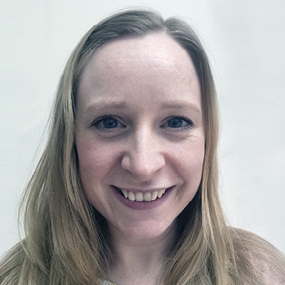Improving the gender balance in research: My experience with SNAP 3

Claire Swarbrick is National Trainee Lead for SNAP 3 – a cohort study investigating the impact of frailty and delirium on outcomes following surgery in older people.
I was shocked to learn from Anaesthesia recently that “Women make up around 40 per cent of the workforce but only 22 per cent of first authors in research papers, 23 per cent of reviewers in journals and 25 per cent of speakers at international meetings”.
In February, I took up the post of National Trainee Lead for SNAP 3. It has been totally different from clinical work, with a focus on self-motivation, ingenuity and communication.
As an anaesthetics ST6 with two young children, life is about balance. So why add research into the challenge? I would like to share with you some of my experience and thoughts on why there are proportionately less women in research.
Being a parent is hectic, introducing a child into your life makes progressing a career — and sometimes even turning up for work on time — harder. It is tough trying to spin the plates of training, clinical work, family life, social life and personal wellbeing.
Prior to taking on my SNAP 3 role, I had dabbled in research, always in my own time, using those few spare minutes on a clinical shift or staying late. One of the biggest barriers to parents undertaking research is the fact that they cannot afford these extra hours. This time is needed to do the nursery run or rush back for bedtime. These tasks are often crucial to a happy family life and are rightly prioritised.
I decided that in order for me to develop my interest in research, I needed dedicated time. SNAP 3 has offered me this; I work from home and I am able to work on our study remotely, attending online meetings with the team. I also do clinical on-call work to maintain my anaesthetic skills.
I don't work isn't fewer hours and I often work after bedtime. However, I find that by taking a dedicated Out of Programme Research (OOPR) experience, I no longer feel guilty that I’m doing a shabby job of those 'other projects’ and parenting AND I can do the nursery runs! I do understand that this isn't for everyone.
Another barrier to women undertaking research during training is the additional years added to their CCT date when giving up chunks of time to an OOPR/additional fellowship. I have delayed my CCT by two or three years, and often think to myself: ‘Does this 'matter? I have no idea! I am not in a rush to become a consultant, but it is one of my ultimate goals.
Each year at ARCP I feel like making some kind of Oscars style speech to thank all the people who have motivated me through the preceding year.
Women are more likely than men to be less than full time (LTFT) and have taken more parental leave. So here is part of my Oscars speech: "Thank you to my amazing husband for working LTFT himself and giving me the option to work full time!". We have both experienced positive and negative reactions to our perceived reverse gender roles. As disappointing as this is, we both see these interactions as an opportunity to challenge stereotypes. By making flexible and LTFT working 'normal' for both parties, we can positively influence the lives of our colleagues and families.
Female trainees undertaking research are often worried about being seen to be demanding after already taking parental leave and requesting LTFT working. I was surprised and delighted by how keen my supervisors were to make the job fit my requirements. They worked with me to find a way to benefit everyone.
If you are a woman trying to work out how to fit research into a training career, or a supervisor wondering how to encourage women, I hope this has helped. Working parents want both their careers and their families to flourish. Balancing this is a constant battle with an internal commentary of guilt but by empowering all plate spinners, we will improve the gender imbalance that exists in research today.
Dr Claire Swarbrick
